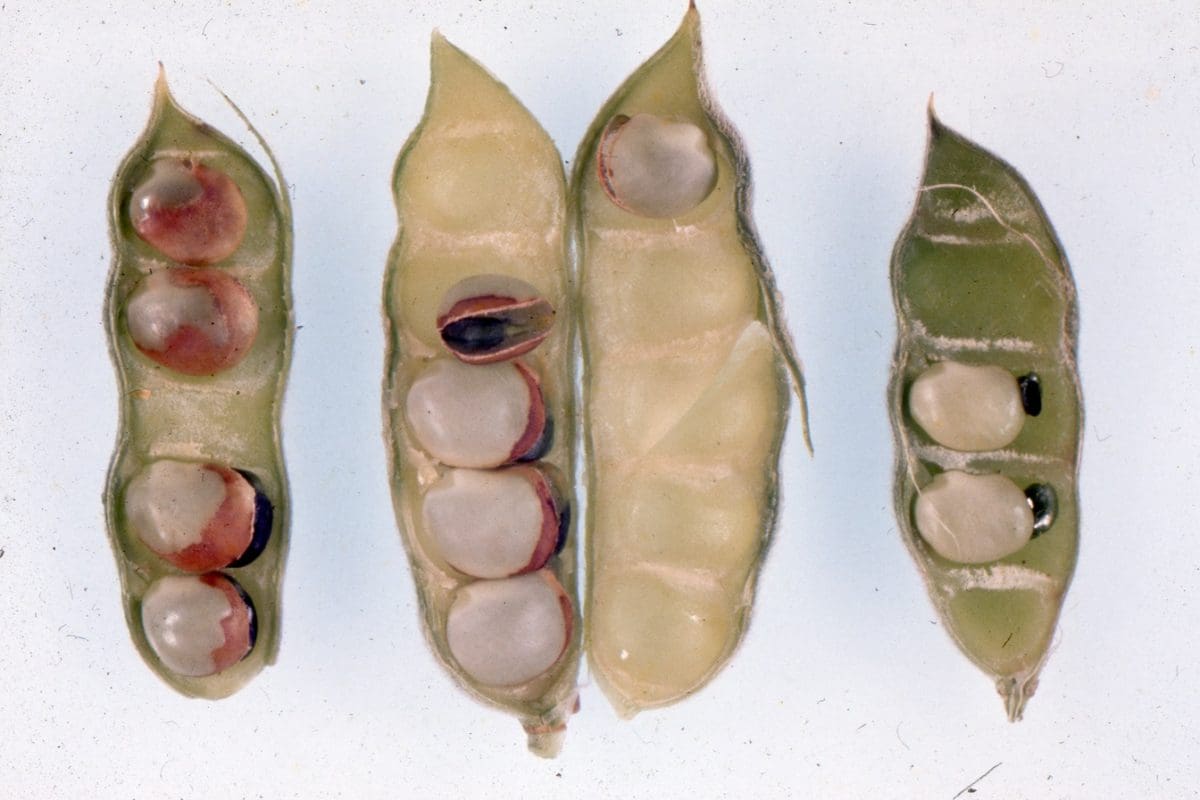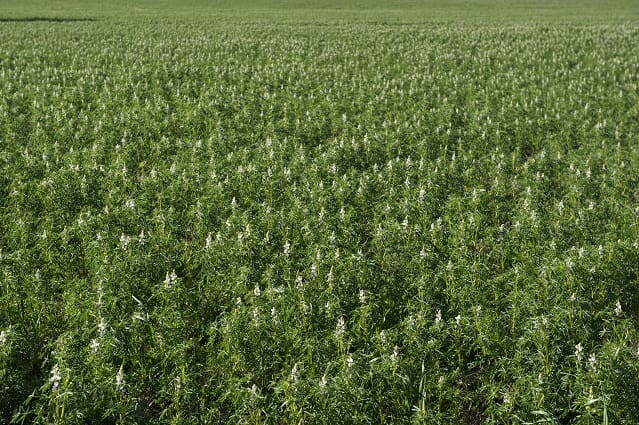
Symptoms of manganese deficiency in narrow-leaf lupin pods. (Photo: Nigel Wilhelm, SARDI)
TRIALS have put different treatments to the test to help determine how to address manganese (Mn) deficiency in lupin crops – an issue that has made an unwelcome return to parts of Western Australia in recent years.
Although the trial results were not conclusive and further investigation is needed, they provided some evidence indicating manganese sulfate may be superior for improving Mn concentrations in the stem and seed in responsive soils and deficient crops.
Manganese sulfate is also the most economical form of Mn for growers. Other Mn formulations include carbonates and chelates.
“The trials showed there were no significant effects on yield or seed Mn content at harvest by any of the formulations when applied at the two rates and two timings,” Grains Research and Development Corporation (GRDC) grower relations manager – west, Jo Wheeler, said.

Recent trials have different treatments to help determine how best to address manganese deficiency in lupin crops. (Photo: AM Photography)
Ms Wheeler said lupin, which was the highest volume pulse crop grown in WA, required good nutritional levels of key elements including Mn.
“Mn deficiency has become more evident in recent years in the northern grainbelt, and is particularly apparent in high yielding, higher rainfall areas, with lighter, sandy soil types,” she said.
“When Mn demand in lupin plants is not met, the results can be costly: low vigour seed and germination percentages, low Mn concentration in the seed, lower yields, split lupin seed at harvest, and reduced returns due to downgrading at receival points.”
Ms Wheeler said that, with GRDC investment, a series of trials was established by Crop Circle Consulting in 2019 in the northern agricultural region.
The trials were in lupin crops grown on soil types known to be low in Mn and responsive to applications of Mn.
All sites were soil tested before the research started and had returned Mn levels under three milligrams per kilogram – considered to be a low level.
Ms Wheeler said the results of the trials varied between sites, formulations, rates and timing of application.
“The 2019 season was especially dry in the northern agricultural region and this affected the results from the trials,” she said.
Current best practice to correct Mn deficiency is to do a soil test before seeding to understand the levels of the nutrient available in the soil.
Levels between 1.5 milligram/kilogram and 4.5mg/kg are considered low and need to be amended before seeding. It is recommended that a fertiliser with an adequate level of available Mn be used at seeding.
If Mn deficiency becomes evident in-crop during the growing season, then foliar applications of Mn can be beneficial.
Timing is critical; the current recommendation is that foliar Mn applications should be made when the pods on the main stem are 2 to 3 centimetres in length and when the secondary stems have nearly completed flowering. The recommended application rate is 1kg of active ingredient per hectare.
Source: GRDC
More information about the trials is available in a new GRDC Fact Sheet ‘Solutions to manage manganese deficiency to reduce the incidence of split seed syndrome in high-yielding lupin’, available at https://bit.ly/3cO91Wp.
Information about growing lupins is available in the GRDC’s Western Lupin GrowNotes™ publication and on the Department of Primary Industries and Regional Development website.

HAVE YOUR SAY